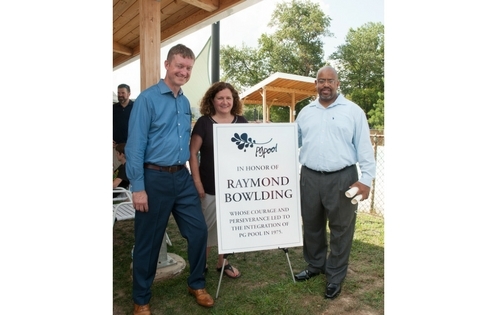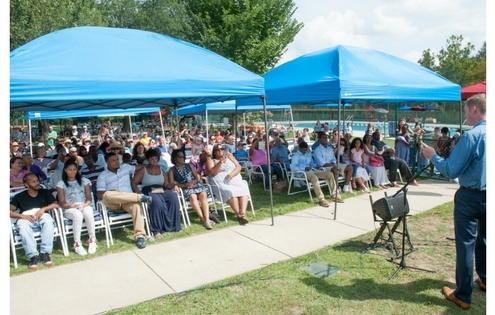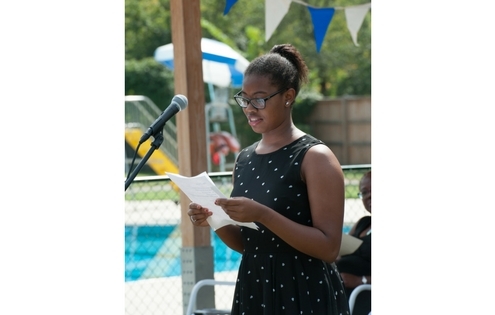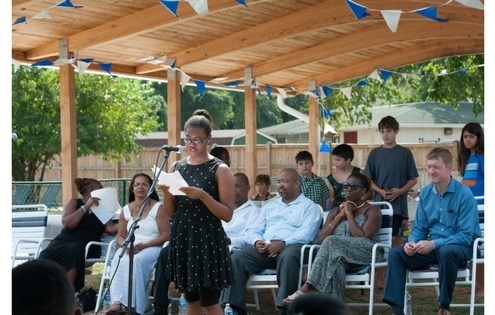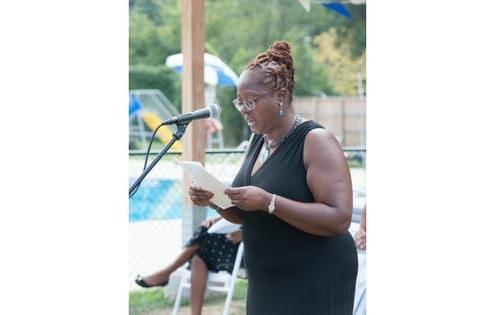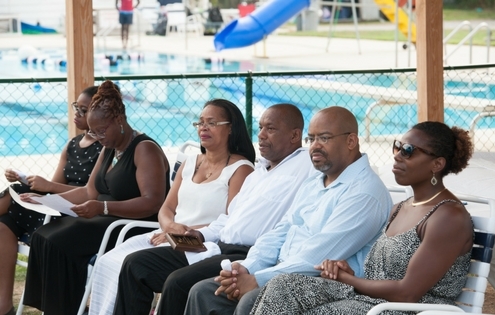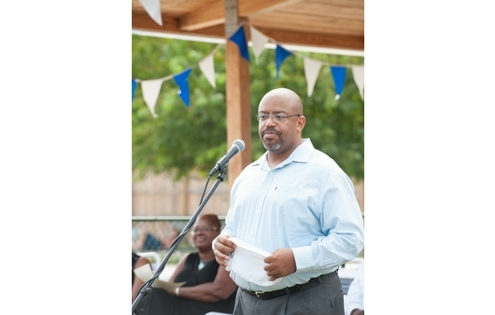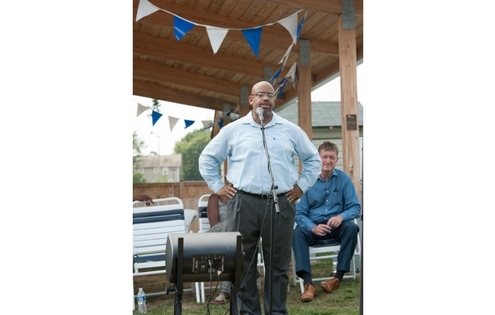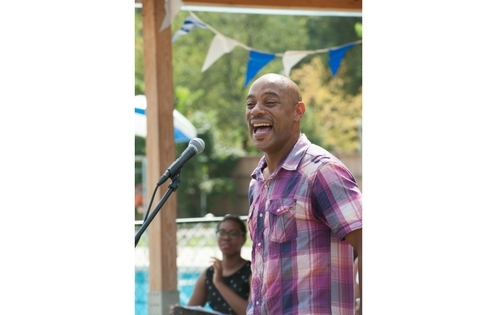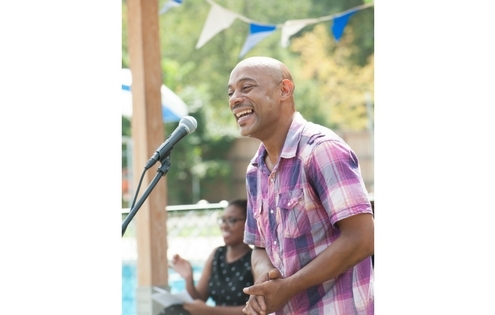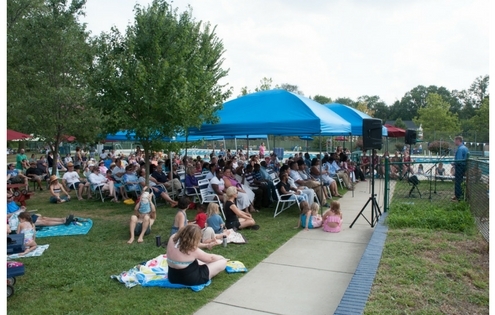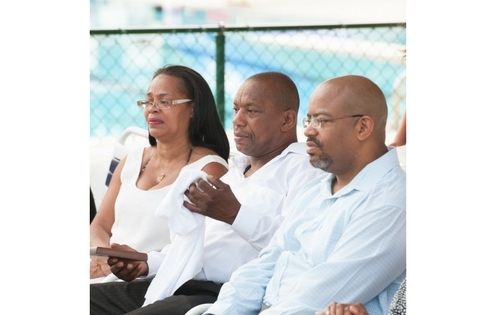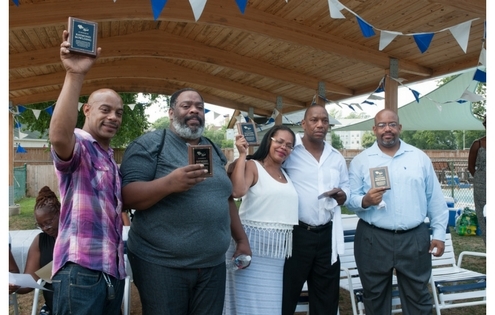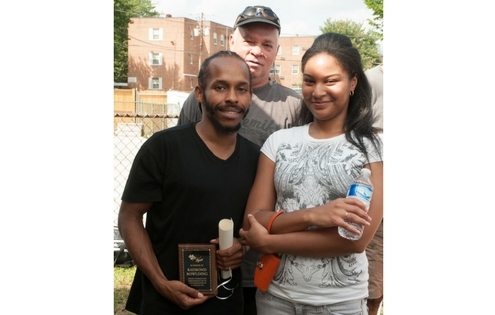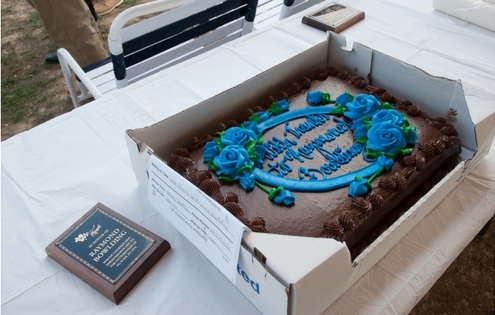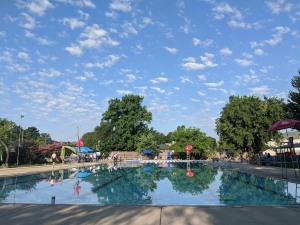On Saturday, September 5, 2015, Prince George’s Swimming Pool dedicated a new pavilion to the memory of Raymond Bowlding, a local African American man who was denied membership of the pool in the early 1970s.
Working with the NAACP, he filed complaints with the Civil Rights Division of the Justice Department and the Maryland Commission on Human Rights. As a result of those complaints, the members voted to change the pool’s bylaws and remove the implicit color bar to membership in 1975.
Many members contributed to making this event a success, including Abebi Wolfe who sang for us, Michelle James who read the dedication (below), and Madison Battle who thanked the 25 or so members of the Bowlding family who attended the event from up and down the East Coast. The slideshow at the top of this page contains photographs, taken by Kristen Dill, during the event. Jim Groves provided the music.
The event was covered in the Washington Post in a story titled, “Forty years later, a Maryland pool will honor the man who integrated it,” by Perry Stein.
The Hyattsville Life and Times also reported on the ceremony, “PG Pool honors man who helped integrate membership.”
RESOLUTION ON Acknowledging Our History
WHEREAS, Prince George’s Swimming Pool acknowledges that there was a racial bar to membership from the inception of the pool in 1956
WHEREAS, we recognize that Raymond Bowlding was rightfully outraged at the fact that he, other African Americans and other minorities were denied membership
WHEREAS, we note that on July 25, 1974, the NAACP filed complaints on behalf of Raymond Bowlding with the Civil Rights Division of the Justice Department and the Maryland Commission on Human Rights for the failure of the pool to allow nonwhite members.
WHEREAS, the following year, in November 1975, the pool membership voted to change the bylaws to create a waiting list that did not require member-sponsorship
THEREFORE, BE IT RESOLVED that Prince George’s Swimming Pool condemns racial prejudice, bigotry and the exclusionary policies of our past
BE IT FURTHER RESOLVED that we aim to ensure that Prince George’s Swimming Pool remains a member-owned, home-away-from-home, backyard pool with a safe, family-oriented and community-based atmosphere
BE IT FURTHER RESOLVED that we aim to provide a venue that is accommodating to and supportive of the diverse interests and backgrounds of our members
BE IT FURTHER RESOLVED, specifically, that the Pool seeks to provide a welcoming setting for all, regardless of gender, race, creed, orientation, national origin and familial status, and be a good neighbor to those in our community and steward of our environment through the maintenance and development of our facilities
BE IT FURTHER RESOLVED that Prince George’s Swimming Pool needs to acknowledge our pool’s shameful exclusionary history and actively ensure that it never be repeated
BE IT FURTHER RESOLVED that this pavilion be dedicated to Raymond Bowlding, whose courage and perseverance led to the integration of Prince George’s Swimming Pool in 1975.
Academic Jeff Wiltse has written “Contested Waters, A Social History of Swimming Pools in America” a fascinating social and cultural history of swimming pools in the United States. In it, he relates how “pools have served as asylums for the urban poor, leisure resorts for the masses, and private clubs for middle-class suburbanites. As sites of race riots, shrinking swimsuits, and conspicuous leisure, swimming pools reflect many of the tensions and transformations that have given rise to modern America.”

